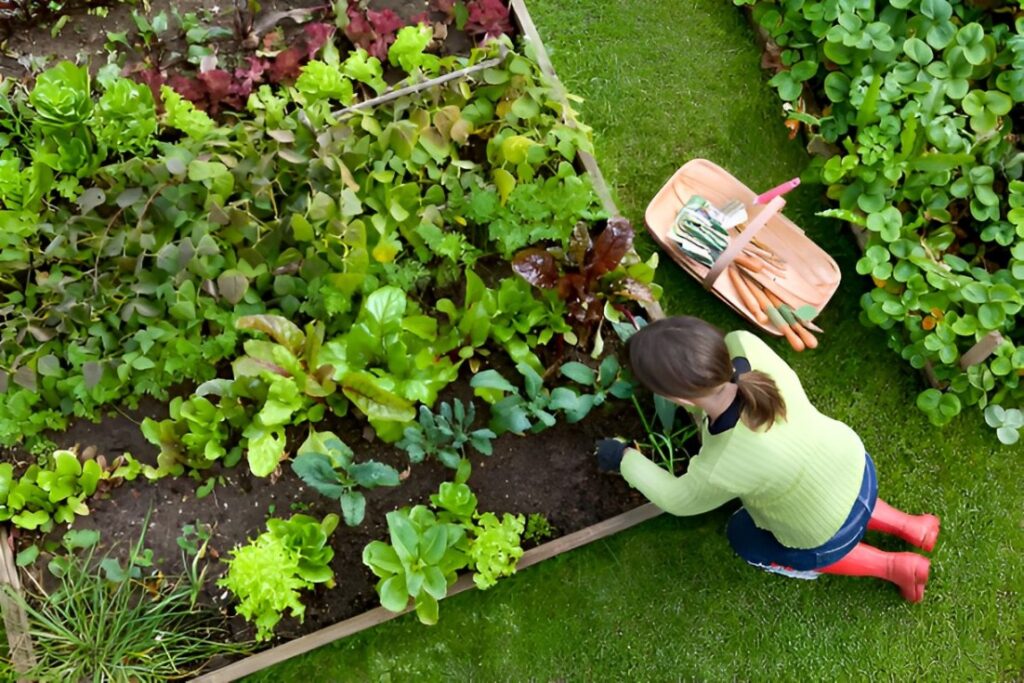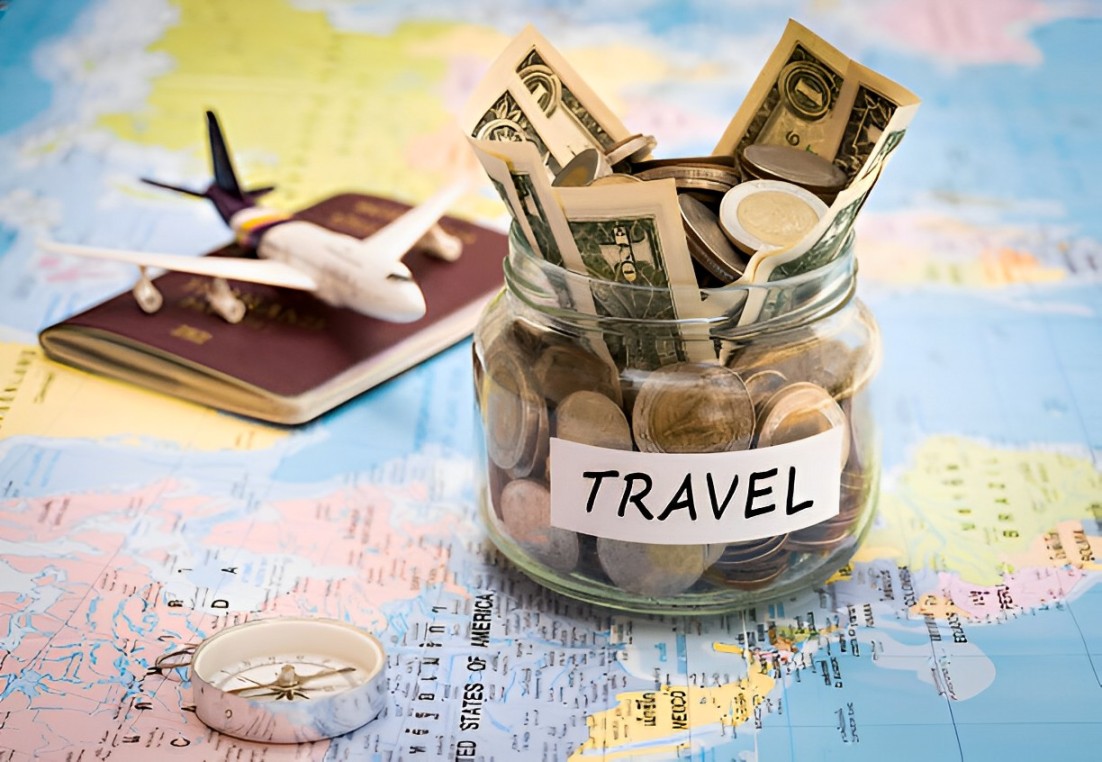Table of Contents
- Introduction
- Understanding Frugal Living
- The Importance of Setting a Budget
- Top 10 Frugal Living Hacks
- Meal Planning and Cooking at Home
- Embrace DIY Projects
- Shopping Smart: Coupons and Discounts
- Cut Unnecessary Subscription Services
- Buy Second-Hand and Thrift Shopping
- Utilize Public Transportation or Carpooling
- Energy Efficiency at Home
- Grow Your Own Food
- Take Advantage of Free Entertainment
- Learn Basic Financial Literacy
- Common Misconceptions About Frugal Living
- How to Sustain a Frugal Lifestyle
- Conclusion
- Additional Resources
Introduction
In an age marked by economic uncertainty and rising costs, adopting frugal living strategies has become more relevant than ever. Frugality isn’t merely about pinching pennies; it’s about making conscious choices that lead to financial freedom. As we step into 2025, individuals and families are searching for effective ways to maximize their savings while still enjoying life. This blog post explores ten impactful frugal living hacks designed to help you do just that, guiding you toward a more sustainable and financially secure future.
When we think of frugal living, images of deprivation may come to mind. However, this lifestyle is about resourcefulness and creativity—recognizing that you can live well without overspending. By integrating these hacks into your daily routine, you can cultivate a healthier relationship with money, ultimately leading to greater peace of mind.
Frugal living is not just a trend; it’s a lifestyle choice that empowers individuals to take control of their finances. It’s about being proactive rather than reactive, ensuring that every dollar spent brings value and joy. In the following sections, we will dive deeper into the concept of frugal living, explore actionable hacks, and equip you with the knowledge to thrive in a financially savvy manner in 2025.
Understanding Frugal Living
What is Frugal Living?
Frugal living refers to adopting a lifestyle that emphasizes careful management of resources, particularly money. This approach encourages individuals to spend wisely, prioritize needs over wants, and find cost-effective alternatives in their daily lives. Here are some key principles of frugal living:
- Mindful Spending: Being intentional about purchases helps in avoiding impulse buys that add little value. Mindful spending is about evaluating whether a purchase aligns with your values and long-term goals. For instance, instead of buying that trendy gadget, consider if it will truly enhance your life or if it’s merely a fleeting desire.
- Resourcefulness: Utilizing what you have and seeking creative solutions can significantly cut down on expenses. For example, if you find yourself with leftover ingredients after a meal, think of innovative ways to repurpose them rather than tossing them away.
- Sustainability: Frugal living often aligns with environmentally friendly practices, like reducing waste and opting for sustainable products. By choosing to buy less and use what you have, you contribute to a healthier planet while also saving money.
- Financial Literacy: Understanding finances, including savings, investments, and budgeting, is crucial for effective frugal living. Being financially literate means you can make informed decisions that positively impact your financial situation and future.
Why Consider Frugal Living in 2025?
As we look ahead to 2025, several economic factors underscore the relevance of frugal living:
- Inflation: Rising prices for everyday goods and services make it essential to stretch your dollars further. The cost of living is increasing, and many households find it challenging to maintain their quality of life without careful financial planning. By adopting frugal living practices, you can combat the effects of inflation and ensure your hard-earned money goes further.
- Economic Uncertainty: Job market fluctuations and global events may lead to financial instability for many households. With the rise of automation and changes in global economies, job security may be a concern. Frugal living equips you with the tools to manage your finances better, ensuring you can weather economic storms.
- Environmental Concerns: With an increasing focus on sustainability, many individuals are drawn to frugal living not just for financial reasons but also to lessen their ecological footprint. By making conscious choices about consumption, you contribute to a more sustainable future while potentially saving significant amounts of money.
In 2025, embracing a frugal lifestyle can help you navigate these challenges effectively, fostering both financial security and environmental responsibility. The upcoming sections will outline practical strategies that not only help you save money but also enable you to enjoy life fully without overspending.
The Importance of Setting a Budget
One of the foundational steps in practicing frugal living is establishing a well-structured budget. A budget acts as a roadmap for your finances, guiding your spending and savings decisions. Without a clear budget, it’s easy to lose track of where your money is going, leading to overspending and financial stress. Here are the steps to create an effective budget:
- Assess Your Income and Expenses: Calculate your total monthly income and categorize your expenses (fixed, variable, discretionary). Understanding the difference between these categories is essential. Fixed expenses include rent/mortgage and insurance, while variable expenses could be groceries or entertainment. Discretionary spending refers to non-essential purchases, such as dining out or subscription services.
- Set Savings Goals: Determine how much you want to save each month. Consider creating an emergency fund, saving for specific goals, or investing. Having tangible goals—whether it’s a vacation, a new car, or retirement—helps motivate you to stick to your budget.
- Prioritize Needs Over Wants: Identify essential expenses (housing, food, transportation) and differentiate them from discretionary spending (entertainment, dining out). While it’s important to indulge occasionally, prioritizing needs ensures that you cover essential living costs first.
- Use Budgeting Tools: Leverage apps like Mint, YNAB (You Need a Budget), or spreadsheets to track your spending and adjust your budget as necessary. Technology can simplify a process that might seem overwhelming. These tools allow you to visualize your budget in real time, making it easier to stay on track.
- Review Regularly: Regularly revisit your budget to assess your progress and make adjustments as needed. This helps you stay on track with your frugal living goals. Life changes—be it a new job or unexpected expenses—may require you to adjust your budget, so stay flexible.
By setting a clear budget, you can make informed decisions that align with your financial objectives, ultimately leading to greater savings and peace of mind. A well-planned budget not only helps you save but also fosters confidence in your ability to manage your finances effectively.
Top 10 Frugal Living Hacks
Now, let’s dive into the top ten frugal living hacks that can significantly boost your savings in 2025. Each hack comes backed by practical tips, lists, and examples to help you implement them effectively.
1. Meal Planning and Cooking at Home
Cooking at home is one of the most effective ways to save money. Not only does it allow you to control your ingredients and portions, but it also often results in healthier meals compared to dining out. Here’s how to optimize your meal planning:
- Create a Weekly Menu: Plan your meals for the week, incorporating ingredients you already have to minimize waste. Spend some time each week brainstorming meals that use similar base ingredients to avoid spoilage.
- Batch Cooking: Prepare large portions and freeze leftovers for quick meals on busy days. For instance, cooking a big pot of soup or chili can yield multiple servings, which can be frozen and reheated easily, saving both time and money later.
- Grocery List: Always shop with a list to avoid impulse buys. Stick to your list! Before heading out, check your pantry and fridge to make sure you’re only buying what you need.
Sample Weekly Meal Plan
| Day | Breakfast | Lunch | Dinner |
|---|---|---|---|
| Monday | Oatmeal with fruit | Leftover soup | Stir-fried veggies |
| Tuesday | Smoothie | Salad with beans | Chicken and rice |
| Wednesday | Eggs and toast | Sandwich | Pasta with tomatoes |
| Thursday | Yogurt and granola | Quinoa bowl | Tacos |
| Friday | Pancakes | Leftover tacos | Homemade pizza |
| Saturday | Fruit and nut mix | Leftover pizza | Grilled fish and veggies |
| Sunday | Frittata | Family feast | Roast chicken |
By following a structured meal plan, you can cut grocery bills significantly. Research shows that families save, on average, 20-30% on food costs when they implement meal planning. This strategy not only saves you money but also reduces the stress of daily cooking decisions.
2. Embrace DIY Projects
DIY (Do-It-Yourself) projects can save you a significant amount of money. Completing projects on your own can also be a rewarding experience that boosts creativity. Here’s how to get started:
- Home Repairs: Learn to handle simple repairs like fixing leaky faucets or patching up walls. There are many resources available, including YouTube tutorials and home improvement blogs, that can guide you through basic repairs. For example, a simple faucet replacement can cost hundreds if you hire a plumber, yet you can do it yourself for less than $50.
- Crafts and Upcycling: Transform old items into new treasures. For instance, old wooden pallets can be turned into garden furniture, and glass jars can be repurposed as stylish storage containers. Not only does this save money, but it also leads to unique, personalized items for your home.
- Online Resources: Utilize platforms like YouTube or Pinterest for tutorials on various DIY projects. From sewing to woodworking, these platforms are treasure troves of information that can help you learn new skills and save money.
Case Study: DIY Home Decor
A family saved approximately $500 by creating their own home decor instead of purchasing items from retailers. They repurposed old furniture by sanding and painting it, made wall art using inexpensive materials, and crafted unique centerpieces for their living room using thrifted items. This not only saved money but also gave their home a personalized touch that reflects their creativity.
DIY projects can also provide a sense of accomplishment. Completing a project successfully boosts your confidence, encourages you to take on more challenging tasks, and reinforces a frugal mindset.
3. Shopping Smart: Coupons and Discounts
Smart shopping can yield significant savings. Here are some strategies to enhance your shopping habits:
- Couponing: Use coupon apps like Ibotta or Honey to find discounts before shopping. Many of these apps allow you to scan receipts to earn cash back on your purchases, further enhancing your savings.
- Sales and Clearance: Always check for sales, especially during major holidays and end-of-season clearouts. Retailers often mark down items significantly during these times, enabling you to stock up on essentials at a fraction of the price.
- Price Comparison: Use websites like CamelCamelCamel or Google Shopping to compare prices across retailers. This ensures that you’re getting the best deal possible. You can also leverage cashback websites to earn a percentage back on your purchases, further maximizing your savings.
Tips for Effective Couponing
- Organize Your Coupons: Use a binder or an envelope system to keep your coupons organized by category. This will save you time and help you avoid missing any deals.
- Combine Coupons with Sales: Stack manufacturer coupons with store sales for maximum savings. For example, if toothpaste is on sale for $2 and you have a $1 coupon, you can get it for just $1.
- Stay Updated on Store Policies: Different stores have different policies regarding coupon stacking and usage. Familiarize yourself with these policies to take advantage of the best deals.
By implementing smart shopping strategies, you can save a considerable amount on your regular grocery bills, allowing you to allocate those funds toward savings or other essential expenses.
Best Creative Ways to Save Money in 2025
4. Cut Unnecessary Subscription Services
Subscriptions can quickly add up, sometimes with little to show for it. Here’s how to evaluate and manage your subscriptions effectively:
- Audit Your Subscriptions: List all subscriptions (streaming, magazines, etc.) and assess their usage. Many people sign up for services and forget about them, leading to unnecessary expenditures.
- Consider Alternatives: Look for free or lower-cost alternatives for services you rarely use. For example, instead of a paid streaming service, consider utilizing free platforms like Tubi or Pluto TV.
- Pause or Cancel: Don’t hesitate to pause or cancel subscriptions that don’t provide enough value. Most streaming services allow you to pause your subscription, which can be a great option if you know you won’t be using it for a while but want to avoid losing your account.
Example of Subscription Costs
| Service | Monthly Cost | Frequency of Use | Value Assessment |
|---|---|---|---|
| Netflix | $15 | Daily | High |
| Gym Membership | $40 | Weekly | Medium |
| Magazine Subscription | $10 | Monthly | Low |
| Spotify | $10 | Daily | High |
By critically evaluating your subscriptions, you can identify which ones genuinely enhance your life and which are merely draining your finances. A monthly audit can help ensure that you’re only paying for subscriptions that provide value, allowing you to redirect those funds toward savings or other priorities.
5. Buy Second-Hand and Thrift Shopping
Thrift shopping can offer substantial savings while also promoting sustainability. Here’s how to make the most of second-hand shopping:
- Thrift Stores: Explore local thrift shops, consignment stores, and online marketplaces like eBay or Poshmark. You can often find high-quality items at a fraction of the original price, from clothing to furniture and home decor.
- Facebook Marketplace: Utilize social media platforms to find used items in your community. Many people sell gently used furniture, electronics, and appliances at a significantly lower cost than retail.
- Garage Sales: Spend weekends hunting for bargains at garage sales or community flea markets. Negotiating prices at these sales can result in even greater deals.
Tips for Successful Thrift Shopping
- Know Your Measurements: When shopping for clothing or furniture, knowing your measurements will help ensure that your purchases fit well. This prevents wasted money on items that don’t suit your needs.
- Check for Quality: Always inspect items before purchasing to ensure they’re in good condition. Look for signs of wear and tear, and if buying electronics, ask the seller if you can test them before completing your purchase.
- Stay Open-Minded: Sometimes you might find unexpected treasures that aren’t on your shopping list. Be open to exploring new styles or items that could enhance your life.
By embracing second-hand shopping, you not only save money but also contribute to a more sustainable economy, reducing waste and promoting recycling. Thrift shopping can also be a fun adventure, allowing you to discover unique items that tell a story.
6. Utilize Public Transportation or Carpooling
Transportation costs can eat into your budget significantly. Here’s how to save:
- Public Transport: Use buses, trains, or subways instead of driving. This can save on gas, parking, and maintenance. Many cities offer monthly passes that significantly reduce the cost of commuting, making public transport a viable and cost-effective option.
- Carpooling: Join or create a carpool group for commuting or school runs. This allows you to share costs, reducing both fuel expenses and wear and tear on your vehicle. Carpooling is also a great way to socialize and network.
- Bike or Walk: For short distances, consider biking or walking to save on transportation costs and improve your health. Not only do you save money, but you also contribute to a healthier lifestyle.

Cost Comparison: Public Transport vs. Driving
| Expense | Public Transport (Monthly) | Driving (Monthly) |
|---|---|---|
| Gas | N/A | $100 |
| Parking | N/A | $50 |
| Maintenance | N/A | $30 |
| Public Transport Pass | $70 | N/A |
| Total | $70 | $180 |
Utilizing public transportation or carpooling can lead to significant savings, especially if you commute daily. As shown in the table above, the savings can amount to over $1,200 a year, allowing you to allocate those funds toward savings or other essential expenses.
7. Energy Efficiency at Home
Reducing energy consumption can lead to lower utility bills, which is crucial for anyone practicing frugal living. Here are some tips:
- Energy-efficient Appliances: Invest in appliances with the ENERGY STAR label to save on long-term energy costs. While the upfront cost may be higher, the energy savings over time can lead to substantial savings on your monthly utility bills.
- Smart Thermostats: Use programmable thermostats to optimize heating and cooling schedules. For example, setting your thermostat to lower temperatures during the night or when you are away can save up to 10% on heating and cooling costs.
- Natural Lighting: Take advantage of natural light during the day to reduce electricity usage. Open curtains during daylight hours, and consider using mirrors strategically to reflect light throughout your home.
Energy Consumption Comparison Table
| Appliance | Regular Usage (kWh/month) | Energy-efficient Option (kWh/month) | Savings (kWh/month)
| Refrigerator | 100 | 70 | 30 |
| Washing Machine | 60 | 40 | 20 |
| Air Conditioner | 200 | 150 | 50 |
| Light Bulbs (10 bulbs) | 150 | 75 | 75 |
By implementing energy-efficient practices and utilizing modern technologies, you can reduce your monthly utility bills significantly. For instance, if you replace your traditional light bulbs with LED bulbs, you could save around $75 per month. Over time, these savings compound, allowing you to invest in other areas of your life or boost your savings account.
Moreover, adopting energy-efficient habits also benefits the environment. By reducing your energy consumption, you contribute to decreased greenhouse gas emissions and help slow down climate change. This dual benefit—saving money while being environmentally conscious—makes energy efficiency a cornerstone of frugal living.
8. Grow Your Own Food
Growing your own food can significantly reduce grocery costs and ensure that you have fresh produce at your fingertips. This hack not only saves you money but also promotes a healthier diet. Here’s how to get started:
- Start Small: Begin with easy-to-grow vegetables like lettuce, tomatoes, or herbs in pots or small garden beds. If you don’t have a yard, consider using containers on a balcony or windowsill. Many herbs, like basil and mint, thrive in small spaces and can enhance your cooking.
- Community Gardens: Consider joining a community garden to share resources and knowledge with other gardeners. Community gardens often provide tools and soil, reducing the initial investment required to start your garden.
- Learn Preservation Techniques: Learn to can or freeze excess produce to prevent waste and enjoy fresh food year-round. For instance, if you have a bumper crop of tomatoes, you can learn how to can them, allowing you to enjoy homemade sauces throughout the winter months.

Benefits of Home Gardening
- Cost Savings: Growing your own vegetables can save hundreds of dollars annually. According to the National Gardening Association, home gardeners can save about $600 per year by growing their own fruits and vegetables.
- Healthier Choices: Homegrown produce is often fresher and free of pesticides. Not only does this lead to healthier meals, but it also encourages you to incorporate more vegetables and fruits into your diet.
- Satisfaction and Mindfulness: Gardening can be a therapeutic hobby that reduces stress and promotes mindfulness. Watching your plants grow and harvesting them can bring immense satisfaction.
By growing your own food, you engage in a sustainable practice that not only saves money but also contributes to a healthier lifestyle and environment. It fosters a connection to nature and encourages you to appreciate the food you consume.
9. Take Advantage of Free Entertainment
Entertainment doesn’t have to come with a price tag. Here’s how to enjoy free or low-cost activities:
- Local Events: Check community calendars for free events like festivals, concerts, and outdoor movies. Many towns and cities host summer movie nights or free music festivals that are family-friendly and provide a great way to enjoy the community.
- Nature Exploration: Take advantage of parks, hiking trails, and beaches for free outdoor activities. Activities like hiking, biking, or having a picnic in the park can be enjoyable and cost nothing.
- Library Resources: Libraries offer free access to books, movies, and sometimes even classes and workshops. Many libraries have programs for children and adults, including free exercise classes, book clubs, and educational workshops.
Example of Free Entertainment Options
| Activity | Cost | Description |
|---|---|---|
| Local Concerts | Free | Outdoor concerts hosted by local communities. |
| Nature Hikes | Free | Explore local trails and nature reserves. |
| Library Events | Free | Attend workshops, author talks, or book clubs. |
| Community Festivals | Free | Experience local culture, art, and food. |
By utilizing these free entertainment options, you can significantly reduce your entertainment budget while still enjoying fulfilling activities with friends and family. Exploring your community and taking advantage of local resources not only saves you money but also enriches your life with experiences and connections.
10. Learn Basic Financial Literacy
Improving your financial literacy is key to effective frugal living. Here’s how to enhance your knowledge and empower your financial decisions:
- Online Courses: Platforms like Coursera or Khan Academy offer free courses on finance and budgeting. These resources can provide you with a solid foundation in personal finance, teaching you everything from budgeting basics to investment strategies.
- Read Financial Books: Recommended reads include “The Total Money Makeover” by Dave Ramsey and “Your Money or Your Life” by Vicki Robin. These books offer practical advice and inspirational stories that can motivate you to take control of your finances.
- Follow Financial Blogs: Subscribe to reputable finance blogs that cover saving tips, investment strategies, and budgeting advice. Blogs like The Simple Dollar and Mr. Money Mustache provide valuable insights into living frugally and achieving financial independence.
Benefits of Financial Literacy
- Informed Decision-Making: Financial literacy equips you with the knowledge to make informed decisions about saving, investing, and spending. Understanding the implications of your financial choices leads to greater confidence in managing your finances.
- Debt Management: Being financially literate helps you understand how to manage and reduce debt effectively. Knowledge about interest rates and loan structures enables you to make informed choices about borrowing and repayment.
- Long-Term Planning: Financial literacy allows you to set and achieve long-term financial goals. Whether it’s saving for retirement, buying a home, or funding your children’s education, understanding your finances helps you create a roadmap to reach those goals.
By committing to continuous learning about your finances, you empower yourself to make better financial choices, leading to enhanced savings and a more secure financial future.
Common Misconceptions About Frugal Living
Despite the benefits of frugal living, several misconceptions often deter people from embracing this lifestyle:
- Myth 1: Frugality Means Deprivation: Many think that living frugally requires sacrificing comfort or enjoyment. In reality, frugality is about making smarter choices without missing out on life’s pleasures. For example, choosing to host a potluck dinner at home instead of dining out allows for socializing without the hefty bill.
- Myth 2: It’s Only for the Poor: Frugal living is for everyone, regardless of income level. Many wealthy individuals practice frugality to maintain their wealth and achieve financial goals. Frugality is rooted in the idea of making intentional choices about spending—something everyone can benefit from, no matter their financial status.
- Myth 3: It Takes Too Much Time: While some frugal strategies require an initial time investment, the long-term savings often outweigh this effort. For example, meal planning may take a few hours on the weekend, but the time saved during the week and the reduced grocery bills make it worthwhile.
Quotes to Inspire Frugal Living
“Frugality is not about cutting corners; it’s about making smart choices.” – Unknown
“It’s not how much money you make, but how much you save.” – Unknown
Understanding these misconceptions can help you approach frugality with a more open mind. By debunking these myths, you can embrace a frugal lifestyle that enriches your life rather than making you feel deprived.
How to Sustain a Frugal Lifestyle
Sustaining a frugal living lifestyle requires ongoing effort and adaptability. Here are some strategies to help you stay on track:
- Set Clear Goals: Define both short-term and long-term financial goals to keep your motivation high. For instance, if your goal is to save for a vacation, break that down into smaller, monthly savings targets. Tracking progress can help reinforce your commitment to living frugally.
- Track Your Progress: Regularly review your budget and assess how your frugal strategies are impacting your savings. Use budgeting tools or apps to help visualize your progress, making it easier to stay motivated.
- Find a Community: Connect with like-minded individuals through online forums, social media groups, or local clubs focused on frugal living. Sharing experiences, tips, and successes can inspire and motivate you to stay on track.
- Adapt and Evolve: Be open to trying new frugal strategies and adapting them as your life circumstances change. Flexibility can help you find effective ways to save as your financial situation or personal preferences evolve.
Example of a Frugal Goals Tracker
| Goal | Target Amount | Current Savings | Deadline | Progress (%) |
|---|---|---|---|---|
| Emergency Fund | $5,000 | $1,500 | Dec 2025 | 30% |
| Vacation Fund | $1,500 | $500 | June 2025 | 33% |
| Home Renovation Fund | $10,000 | $2,000 | Dec 2026 | 20% |
By regularly tracking your goals and progress, you can stay motivated and focused on your financial journey. Celebrating small milestones along the way reinforces positive habits and encourages you to continue your frugal lifestyle.
Conclusion
In conclusion, adopting a frugal living lifestyle in 2025 can significantly enhance your financial well-being. By incorporating these ten frugal living hacks into your daily routine, you can maximize your savings, reduce unnecessary expenses, and cultivate a more fulfilling life. Remember, frugality isn’t about deprivation; it’s about making informed choices that align with your values and goals.
As you embark on your frugal journey, start with a few hacks that resonate with you, and gradually incorporate more into your lifestyle. The path to financial freedom is within reach, and every small step counts. Embrace the mindset of resourcefulness, creativity, and intentionality, and watch as your savings grow and financial stress diminishes.
By implementing these strategies, you not only improve your financial situation but also gain greater control over your life. Frugal living encourages mindfulness and appreciation for what you have, leading to a more satisfying and less stressful lifestyle.
Additional Resources
By following these tips and embracing a frugal mindset, you can take control of your finances and build a brighter future. Start today, and see how far frugal living can take you! With dedication and a little creativity, you can enjoy life while saving money. Embrace frugality as a lifestyle choice, and watch as it transforms your financial landscape for the better.




One thought on “Top 10 Frugal Living Hacks to Maximize Your Savings in 2025”